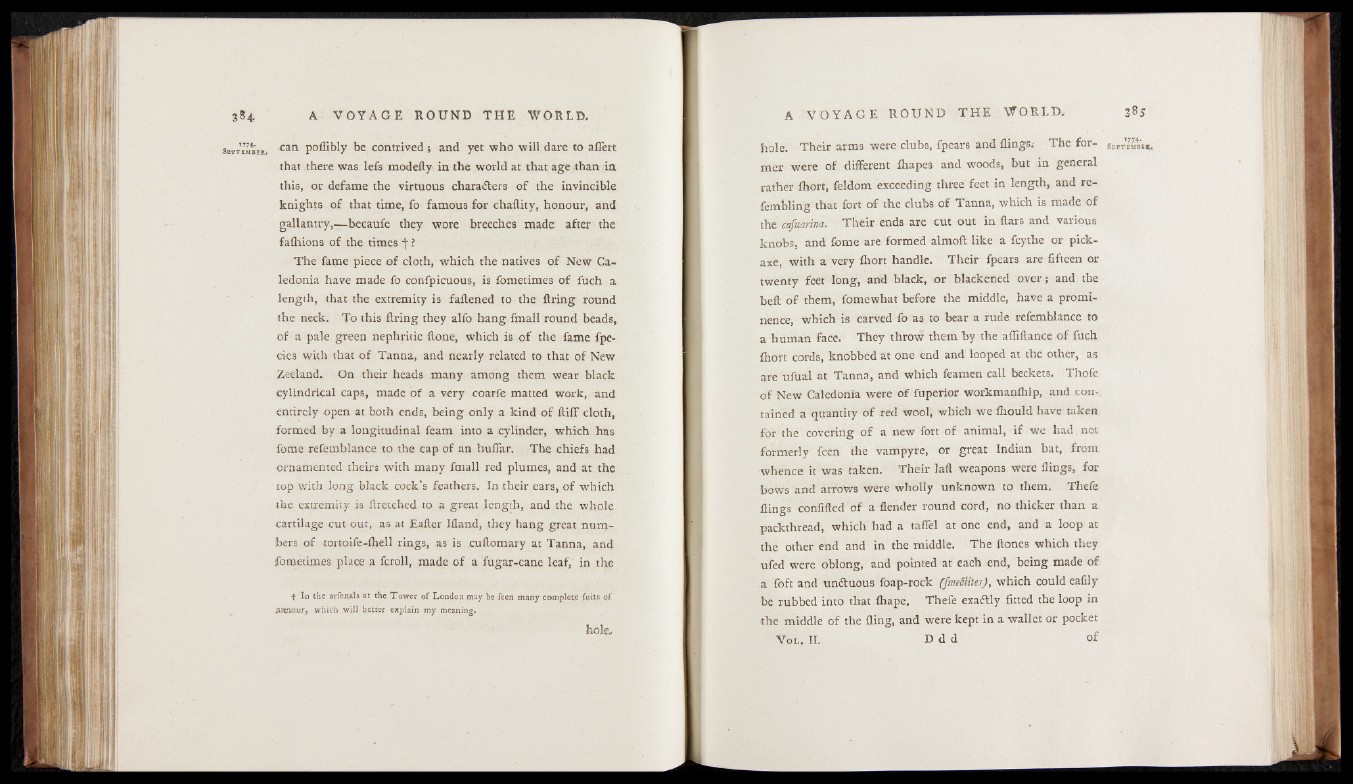
«774-
iSfi'PTEMBES.» can poflibly be contrived; and yet who will dare to aflert
that there was lefs modefly- in the world at that age than in
this, or defame the virtuous characters of the invincible
knights of that time, fo famous for chaftity, honour, and
gallantry,— becaufe they wore breeches made after the
fafhions of the times f ?
The fame piece of cloth, which the natives of New Caledonia
have made fo confpicuous, is fometimes of fuch a
length, that the extremity is fattened to the firing round
the neck. To this firing they alfo hang fmall round beads,
of a pale green nephritic ftone, which is of the fame fpe-
cies with that of Tanna, and nearly related to that of New
Zeeland. On their heads many among them wear black
cylindrical caps, made of a very coarfe matted work, and
entirely open at both ends, being only a kind of ftifF cloth,
formed by a longitudinal feam into a cylinder, which has
fome refemblance to the cap of an huffar. The chiefs had
ornamented theirs with many fmall red plumes, and at the
top with long black cock’s feathers. In their ears, of which
the extremity is ftretched to a great length, and the whole
cartilage cut out, as at Eafter Ifland, they hang great numbers
of tortoife-fhell rings, as is cuftomary at Tanna, and
fometimes place a fcroll, made of a fugar-cane leaf, in the
t In the arfenals at the T ower of London may be feen many complete fuits of
^rtnauTj which will better explain my meaning.
hole.
hole. Their arms were clubs, fpears and flings.- The former
were of different fhapes and woods, but in general
rather fhort, feldom exceeding three feet in length, and re-
fembling that fort of the clubs of Tanna, which is made of
the cafuarina. Their ends are cut out in liars and various
knobs, and fome are formed almoft like a feythe or pickaxe,
with a very fhort handle. Their fpears are fifteen or
twenty feet long, and black, or blackened over; and the
beft of them, fomewhat before the middle, have a prominence,
which is carved fo as to bear a rude refemblance to
a human face. They throw them by the affiflance of fuch
fhort cords, knobbed at one end and looped at the other, as
are ufual at Tanna, and which feamen call beckets. Thofe
of New Caledonia were of fuperior workmanfhip, and contained
a quantity of red wool, which we fhould have taken
for the covering of a new fort of animal, if we had not
formerly feen the vampyre, or great Indian bat, from
whence it was taken. Their laft weapons were flings, for
bows and arrows were wholly unknown to them. Thefe
flings confided of a flender round cord, no thicker than a
packthread, which had a taffel at one end, and a loop at
the other end and in the middle. The ftones which they
ufed were oblong, and pointed at each end, being made of
a foft and undtuous foap-rock (fmetiites), which could eafily
be rubbed into that fhape. Thefe exadlly fitted the loop in
the middle of the fling, and were kept in a wallet or pocket
V o l . II. D d d of
1774*
Se ptember*